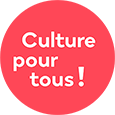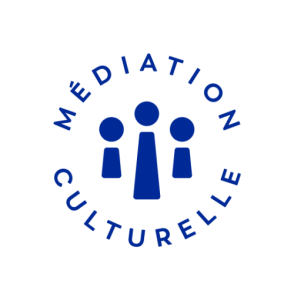Presentation on Cultural Mediation
Cultural mediation refers to the process of cross-linking the cultural and social spheres, and the building of new relationships between policy, culture and public space. It covers a vast array of practices, and is ultimately intended to make everyone a cultural player.
Mediation issues
Cultural mediation developed in the 1960s around the concept of accessibility for a greater number of people to cultural works and productions. It later evolved towards activities involving greater participation and highlighting artistic expression by ordinary people.
Communities concerned
Cultural mediation practices resonate with artists and social players (educational, business and municipal government communities, etc.). Artists are invited to change the way they relate to the public, while social players are invited to incorporate the cultural dimension more broadly into their areas of activity. Mediation is becoming increasingly thought of, funded and practised as a strategy in community revitalization and social development.
The cultural mediator
The cultural mediator’s role is to foster relationships between the cultural object (physical production, creative process, etc.) and people. Depending on the project, he or she will be an information provider, a coach, a teacher, etc. The cultural mediator’s work depends on and is defined by the specific characteristics of the clientele served and the artistic, cultural or social context.
Impacts
Mediation creates special gathering places where artists and the public meet and which promote exchanges between people, as well as learning and engagement. It can also help to break down psychological and social barriers associated with the exclusion of target groups.
Areas of practice
Participatory activities help to demystify the creative process in the streets and public spaces. Socially engaged art is driven by a process of people participation where those involved adopt a position on various issues. For social workers and community stakeholders, mediation is a social inclusion tool. Incorporation of the arts into the healthcare or working communities helps to make places where people meet more pleasant and get them involved in a common project.
In both urban and regional settings, cultural mediation helps to enhance the physical or social environment, and contributes to the development of distinct identities and the creation of social bonds.
The initiatives of museum and heritage institutions often involve partnerships with community organizations or schools. Youth projects can promote learning, be part of cognitive development or be a way to combat cultural exclusion. Intercultural initiatives, for their part, can involve organizations providing services for immigrants, ethno-cultural community institutions, or artistic institutions with changing clienteles.
Culture pour tous and cultural mediation
Over the years, Culture pour tous has contributed significantly to the emergence of cultural mediation and invested a lot in encouraging and raising awareness of activities that have become regular practices across Quebec. Both artistic organizations and municipalities have incorporated cultural mediation into their operations. This grassroots movement finds its purpose in the growing importance accorded to arts and culture in the fostering of well-being, which is the prime objective of Quebec’s cultural policy, “Partout, la culture” [our culture here, everywhere].
In 2020, Culture pour tous participated in the setting up of the Observatoire des médiations culturelles (OMEC) [cultural mediation observatory]. It is the outcome of a project launched in 2006 by the Groupe de recherche en médiation culturelle (GRMC) and initiated by Culture pour tous in collaboration with the Community University Research Alliance on the Social Economy and the Service aux collectivités of the Université du Québec à Montréal. The OMEC received a substantial grant from the Fonds de recherche du Québec – Société et culture.
Three other on-the-ground partners will participate in the work over the next four years in collaboration with OMEC member researchers: the Exeko organization, the city of Vaudreuil-Dorion, and the Cellule régionale d’innovation en médiation culturelle du Saguenay–Lac-Saint-Jean.
Feel free to consult all of our cultural mediation resources (guides, glossaries, articles, minutes of meetings, and videos), only in French.

